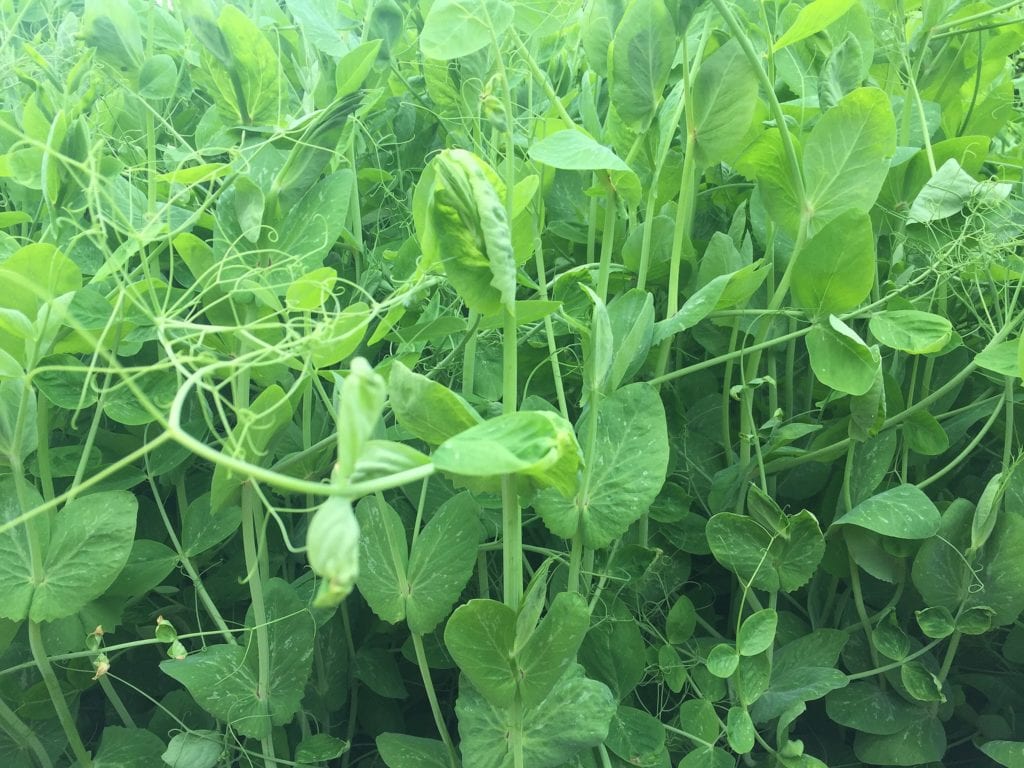
The number of acres planted in cover crops in Pennsylvania rose 33 percent between 2012 and 2017. (Photo credit: Betty Cai [CC BY-SA 4.0])
The recently released 2017 Census of Agriculture revealed some troubling numbers. We now know that, between 2012 and 2017, the total number of farms in the U.S. declined by three percent; the average age of U.S. farm producers rose from 56 to 57.5; and farms across the country are increasingly consolidating, with one percent of the largest farms accounting for 35 percent of all sales.
Yet, when we examine the data for Pennsylvania through the lens of sustainable farming practices, we also find cause for hope. The number of farms in the state that employ no-till practices increased by three percent, growing the number of no-till acres by 17 percent and bringing the total number of acres in no-till production to 1.6 million.
Similarly, the number of farms planting cover crops also increased by three percent, resulting in a 33 percent growth in cover crop acres and placing Pennsylvania tenth in the nation for this conservation practice.
“…when we examine the [2017 Ag Census] data for Pennsylvania through the lens of sustainable farming practices, we also find cause for hope.”
Sustainable farming methods like reducing tillage and planting cover crops can help crops better withstand severe weather. These practices improve the physical structure of soil, such as its ability to form aggregates, and reduces the number of days fields are left fallow, making nutrient-rich topsoil less prone to erosion from wind and rain. Additionally, the organic matter in healthy soils can help crops survive periods of prolonged rain by better absorbing excess water, or better retaining water during droughts.
The Pennsylvania No-Till Alliance has been conducting its own survey of no-till practices and cover cropping over the last three years, and they too have found farmers are increasingly implementing these practices. “We’ve additionally found that farmers are planting multi-species cover crops, which further generates benefits to soil health, setting the stage for improved water quality,” said PASA member and Alliance president Jim Hershey.
|
Pennsylvania |
|||
| Category | 2017 | 2012 | Growth |
| NO-TILL: NUMBER OF OPERATIONS | 14,295 | 13,937 | 3% |
| NO-TILL: ACRES | 1,611,121 | 1,379,252 | 17% |
| COVER CROP PLANTED: NUMBER OF OPERATIONS* | 10,856 | 10,588 | 3% |
| COVER CROP PLANTED: ACRES* | 595,309 | 446,295 | 33% |
| Data from 2017 USDA Census of Agriculture; calculations by author *Excludes acres enrolled in Conservation Reserve Program (CRP) |
|||
The organic sector in Pennsylvania, in particular, continues to experience growth. The number of certified organic farms in the state rose by 82 percent between 2012 and 2017, compared to 39 percent nationally. Organic farm sales in Pennsylvania rose 800 percent in just five years—from $78.5M to $707.6M—compared to 133 percent growth nationally. Additionally, the number of farms in the state transitioning to organic has increased by 17 percent.
This monumental growth in organic not only has positive implications for reducing the use of off-farm inputs like synthetic pesticides and fertilizers and sustainable agriculture in the state; it’s having economic effects for farms, too. Seventy-two percent of organic farmers in the state report that farming is their primary income source, in contrast with 46 percent of Pennsylvania farmers overall.
|
U.S. |
Pennsylvania |
|||||
| Category | 2017 | 2012 | Growth | 2017 | 2012 | Growth |
| ORGANIC SALES | $7.3T | $3.1T | 133% | $707M | $78M | 801% |
| ORGANIC $/OPERATION | $401K | Data unavailable | Data unavailable | $ 675K | Data unavailable | Data unavailable |
| NUMBER OF ORGANIC OPERATIONS | 17,741 | 12,771 | 39% | 1,055 | 581 | 82% |
| ORGANIC STATUS: TRANSITIONING | 3,723 | 3,240 | 15% | 186 | 159 | 17% |
| Data from 2017 USDA Census of Agriculture; calculations by author |
||||||
While the gender ratio of farmers in the state remains the same between organic farmers and all farmers—65 percent male and 35 percent female—organic farmers are notably younger. The majority are under 45 years old, compared to the majority of farmers overall in the state being 45 or older.
|
Pennsylvania |
||
| Category | All | Organic |
| Producers under 25 | 3% | 7% |
| Producers 25-34 | 10% | 23% |
| Producers 35-44 | 13% | 24% |
| Producers 45-54 | 19% | 18% |
| Producers 55-64 | 26% | 17% |
| Producers 65-74 | 19% | 7% |
| Producers 75+ | 10% | 4% |
| Data from 2017 USDA Census of Agriculture; calculations by author |
||
Despite the major growth in the organic industry, the latest state-specific survey for organic agriculture is from 2016. When an industry is growing as rapidly as organic agriculture is, it’s important to closely monitor trends. “National Agricultural Statistics Service (NASS) is currently preparing to conduct the next organic follow-up survey for states, and 2019 data will be available in fall of 2020,” according to the agency’s northeast regional director, King Whetstone.
PASA will be developing further assessments of Pennsylvania farmers’ sustainable practices to complement what we’ve found so far in our analysis of the 2017 USDA Census of Agriculture data and its add-on surveys. We know from our farmers that any strategies that both improve the economic viability of farms and ensures our natural resources are protected are what will keep us farming now and far into the future.
You can access the 2017 Census of Agriculture here.